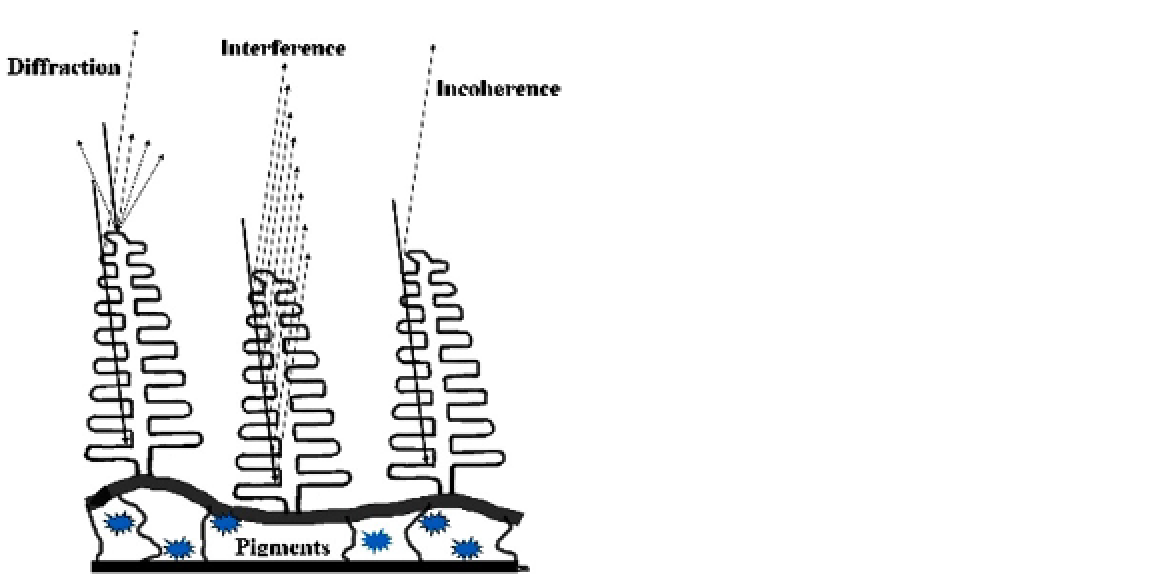Biomedical Engineering Reference
In-Depth Information
already found practical applications in the fabri-
cation of nano-engineered chiral reflectors for
display and laser technologies
[82]
. Such chiral
reflectors are sometimes called
circular Bragg
filters
[79]
.
Other natural photonic crystals can be two- or
three-dimensional. Thus, the green iridescence
of
Lamprocyphus augustus
, which is almost
independent of the viewing angle, is due to exo-
skeletal scales of differently oriented single-crys-
talline micrometer-sized domains with an
interior diamond-based structure
[39]
. The
apparently complete bandgap is collaboratively
created by scales of three different orientations.
Although the diamond-based lattice has been
artificially engineered to function at
λ
∼
1,300 nm
[83]
, the natural structure in
L. augustus
remains
the only example functioning in the visible
regime. Reproducing it artificially remains a
significant task
[84]
.
Another example of collaboration in natural
photonic structures is furnished by the irides-
cent green wings of the emerald swallowtail
butterfly
Papilio palinurus
. The surface of each
wing scale is a regular two-dimensional array
of concave depressions that are 4-6
μ
m in diam-
eter and 0.5-3
μ
m in depth
[50]
. Each depres-
sion comprises 10 unit cells, each of which is
made of two constituent layers. Yellow light is
preferentially reflected from the bottom and
blue light is reflected by the walls of each
depression. These two colors add to produce
the green color perceived by the human eye. In
addition, the walls, but not the bottom, are vis-
ible in a reflection-mode microscope under
crossed polarizers
[85]
.
FIGURE 11.17
The complex collaboration of four mecha-
nisms responsible for the iridescent
Morpho
blue, after
Ref.
11
.
structure is also found in plants and is known to
produce blue color in the leaves of certain tropical
understory plants
[80, 81]
. The reflected light is
circularly polarized, often left-handed.
The exocuticle of scarab beetles is a helical
arrangement of layers of parallel chitin microfi-
brils. The parallel microfibrils in a specific layer
act as an optically anisotropic medium having a
refractive index for light polarized along the
microfibrils (slow axis) larger than the refractive
index for perpendicularly polarized light (fast
axis). In each subsequent layer, the orientation of
these axes is rotated by a small angle compared
to the previous layer. This helicoidal stack of
layers, which usually is left-handed structurally
and with a well-defined pitch (the distance per-
pendicular to the layers for which a 360° rotation
is obtained), creates a periodicity that is respon-
sible for circularly polarized colored reflection,
depending on the pitch and the structural hand-
edness of the exocuticle
[77]
. This phenome-
non--called the
circular Bragg phenomenon
--has
11.5 ATTEMPTS TO MIMIC
STRUCTURAL COLORS
Inspired by nature, some researchers are
attempting to use the principles underly-
ing natural structural colors in engineering
practice. But engineered biomimicry is not

